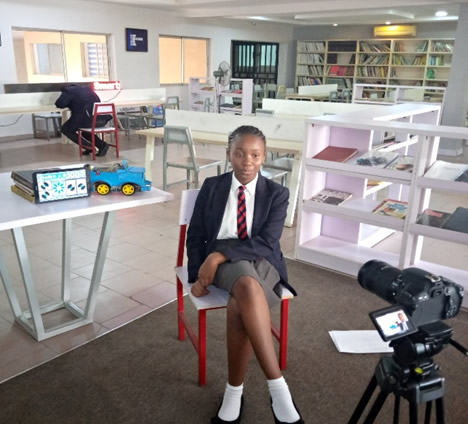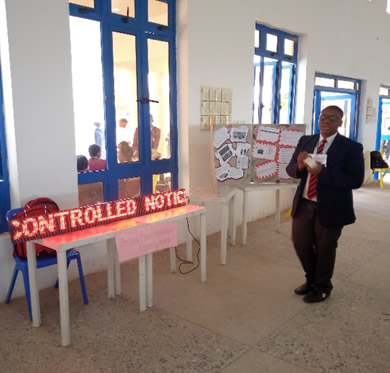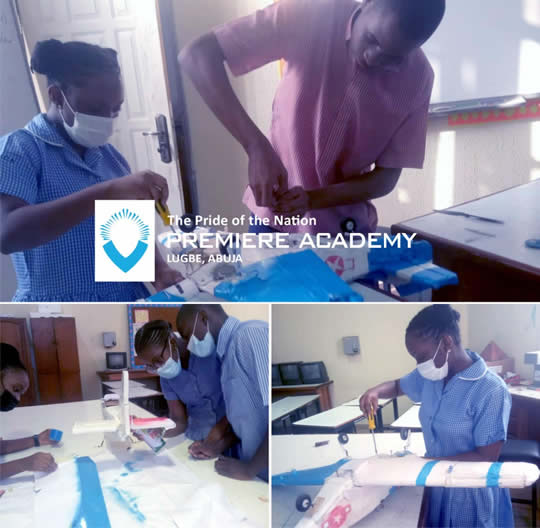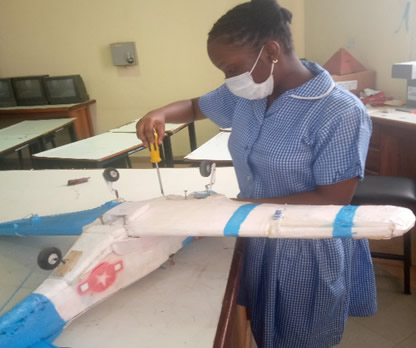Do you know that children are greatly inventive and creative? That child of yours is a genius and with the right knowledge, skills and support they could become the next Elon Musk of Nigeria, or build the world's fastest machine-like Philip Emeagwali. Technology is the future. In fact, today, it is an indispensable tool for global success as everything now revolves around the use of technology.
It is a fact that those who would succeed and lead tomorrow’s generation are those who are tech-savvy. With references to the above knowledge, Premiere Academy is not backing off from imparting cutting-edge tech knowledge to her students. The infusion of technological education in our teaching programme has helped our students to acquire theoretical and practical knowledge on technology over the years. Our Students have started translating theoretical knowledge of technology acquired from the classroom under the supervision and facilitation of our team of technology teachers into viable, useful and practical projects. Meet few of our students as they talk about their career choices and their projects. No doubt these are demonstrations of critical thinking abilities, coming up with such innovative tech projects:
- SMARTPHONE CONTROLLED ROBOTIC CAR
By Zazinye Gaiya (SS2 science2)

My name is Zazinye Gaiya, I am in Year 11 Science2 .I am a young aspiring mechatronics engineer. A career desire I developed at Premiere Academy Lugbe Abuja few months after I got admitted after attending few technology classes. This spiked my interest to build this Smartphone Controlled Robotic Car.
Working Principle: The robotic car is quite fascinating. It works on the principle of bluetooth wireless technology. Signals from any android smartphone with Arduino Bluetooth Controller App installed, are received by a HC-05 bluetooth module and transmitted to an arduino microcontroller board. This board interprets the signals and instructs the motor driver IC to respond according to the C-programme code uploaded and the robotic car moves according to each command received. This makes the robot moves forward, backward, left or right accordingly.
Applications: This robotic car project is an interesting toy for children. Every child, and of course adults too, will find this interesting to play with. With some modifications, the bot can be used as an autonomous spy robot with a camera, going to places and taking pictures or videos. It can also be modified and applied to do jobs that are hazardous to human lives, like sending it to work where the temperatures are very high to humans for to survive.
I really feel great that I succeeded in building this project with the supervision of my technology teachers, and I thank my school, Premiere Academy Lugbe Abuja for providing the enabling learning environment for not only me, but all the students of the Academy.
- SMARTPHONE CONTROLLED ELECTRONIC SCROLLING DISPLAY

By Torobong Iwot (SS3 Science2)
My name is Torobong Iwot. I am a Year 12 Science 2 student of Premiere Academy Lugbe Abuja. I built this Smartphone Controlled Electronic Scrolling Display project. My future career ambition is to become a Computer Engineer. Premiere Academy Lugbe Abuja has provided lots of opportunities for us students to develop our inbuilt talents, and I must thank my technology teachers for their assistance to make this project a success.
Working Principle: The display board uses a microcontroller, in this case, an arduino nano board (containing the ATmega329p) which has the software code to display the default message coded into it. It also used a bluetooth module to interface with any android smartphone via an app known as Arduino Bluetooth Controller to enable wireless sending of any message from the smartphone to the display board. Once a message is sent from the smartphone, it takes over the default message until the board is powered off and switched on before the default message is restored.
Applications: This display board can be used as signboards at shops, malls, filling stations, schools, hospitals, hotels, etc for the purpose of advertisement and notifications. This particular one with a smartphone input option can be used for constantly changing the information displayed to pass on specific instructions or information, etc. It can be improved on to display both clocks and dates and can also be made larger than this.
It was indeed a fascinating experience building this project step by step, and it taught me practical links between computer coding and interaction with the hardware electronics.
- AUTOMATIC DRIP WATER IRRIGATION SYSTEM
By Oluchi Chigbo (SS3 Science1)

My name is Oluchi Chigbo, a student of SS3 science. I constructed the project Automatic Drip Water Irrigation System.
Working Principle: This is a mini water irrigation system that is designed to automatically sense the soil condition of a small garden (like the mini school garden) and waters the soil. The soil sensor, usually dipped into the soil can sense three soil conditions: dry soil, moist soil and soggy soil. When the soil condition is dry, the sensor communicates the microcontroller (in this case an arduino nano) according to the uploaded code, which in turn activates the pump to water the soil. When the soil is moist, the pump automatically stops pumping the water. The Liquid Crystal Display (LCD) screen displays the soil condition and temperature of the soil at each point and can be read easily. The system has a dry tank protection feature which produces an alarm via the loudspeaker when the water level in the tank is dry. By hearing the alarm, the gardener would know that more water has to be supplied in the tank. For as long as there is water in the tank, the system continues to water the plants automatically without human interference.
Applications: This is a very interesting project that can be used to water flowers or small gardens automatically even in the absence of a human being provided water is available in the reservoir tank. When modified to many pumps, the system can be used on large farms and will solve the problem of food production in the Northern parts of Nigeria with longer dry seasons, with the provision of bore holes to enhance constant water supply.
I am fascinated to have contributed my little part to facilitate adequate food security for my country by this wonderful project. Many thanks to my technology teacher, Mr Luga, for his supervision and help to actualize this project. My career ambition is to be a medical doctor, but I also like farming.
- MODEL RADIO-CONTROLLED RC AIRPLANES

By Anita Akpu (SS2 Science2), Badejo David (SS2 Science2), Fuchinanya Akpuokwe (SS2 Science1) and Attah Emmanuel (SS2 Science1)
Working Principle: The airplanes work on the principle of radio wave transmission and reception. They can be controlled by a handheld remote controller device and can be flown up to a distance of 1000m (1km) radius into space from the flyer.
Applications: RC planes can be applied as aerial cameras in first person view (FPV) for wide area recording, as toys for fun flying, as mission drones with flight simulators or payloads, etc.
The projects are beginner or entry level projects for intending aeronautical engineers, robotic engineers and pilots.
OTHER PROJECTS YET TO BE COMPLETED ARE
- OBSTACLE/BARRIER AVOIDING ROBOTIC TANK
By Jabir Mohammed (JSS3 Onyx)
- CAMERA DRONE
By Elaigwu Emmanuella and Gordon Golit (SS1 Science)
- ELECTRIC CAR PROJECT
By JSS 3 students
- 3D-ELECTRONIC SIGN BOARD PROJECT
By SS3 Electronics Graduating Class


